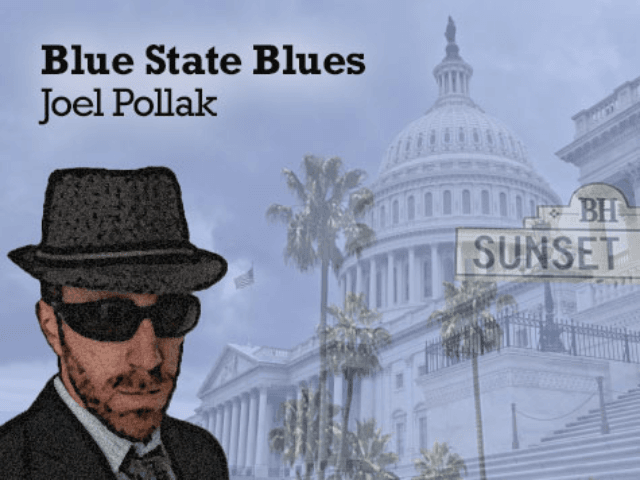The Black Lives Matter movement has raged for nearly two years. In its better moments, it has provoked soul-searching by sincere Americans who want to understand each other, and who want the law to be enforced fairly as well as effectively.
In its worst moments — such as the one we are enduring now — Black Lives Matter has inspired violence, terrorized police, driven up crime, and divided Americans.
Overall, the experience has produced three basic lessons — and raised one lingering question.
1. Lesson 1: Race does not actually matter in police shootings. A black Harvard economics professor has published a new study that reveals that there is no evidence of racial bias when police use deadly force. “On the most extreme use of force – officer-involved shootings — we find no racial differences in either the raw data or when contextual factors are taken into account,” the study concludes.
The study also reports that blacks and Hispanics are 50% more likely to experience some kind of force in their interactions with police (see below). But the claim that the police are killing black people has no basis in fact.
There is anecdotal evidence to support the Harvard study’s hard numbers. Fresno police recently shot and killed an unarmed white teenager, Dylan Noble. The police “body cam” videos of the shooting are painful to watch. It is not clear that they had to use deadly force against him. But it is also likely that they had some reason to, after he appeared to be holding a long object in one of his hands; seemed to reach behind his back, or to his waist; and walked towards officers who already had their guns drawn.
The common denominator in most of these sad events is not race, but often the unpredictable behavior of the victims.
2. Lesson 2: Racism is still a part of black Americans’ everyday experience. Though there is no racial bias in shootings, minorities do experience different treatment by police.
On Wednesday, Sen. Tim Scott (R-NC), a Tea Party conservative and the first black Senator from the South since Reconstruction, gave eloquent voice to that sentiment, describing how he had once been stopped by Capitol police. They did not believe the black man standing at the entrance to the building was a U.S. Senator.
“[T]he officer looked at me, a little attitude and said, ‘The pin, I know. You, I don’t. Show me your ID’,” he recalled.
That is not to say that black people are the only people who experience racism. Nor does it mean that America’s institutions are fundamentally corrupt. The idea of “systemic racism,” which has become a Hillary Clinton talking point, is an absurd contrivance that presumes all white people to be guilty, and is used to bully people — including liberals — into conformity with the radical left.
But as even former New York mayor Rudy Giuliani noted, as he called Black Lives Matter “inherently racist,” the perception of racism creates its own reality. And there is a basis for that perception, as the Harvard study notes.
3. Lesson 3: Police, like most people, want to do the right thing. One of the striking, but overlooked, common features of the Alton Sterling shooting in Baton Rouge, the Philando Castile shooting in Minnesota, and the Dylan Noble shooting in Fresno is that the police showed a genuine concern for the people they had shot, once the confrontations were over.
Police called paramedics right away, for example, after Sterling had been shot. And in the body cam video of the Noble shooting, one officer is heard literally pleading with the young man to raise his hands so he would not have to shoot again.
There are rare exceptions, of course. In the Tamir Rice shooting in 2014, where a police officer shot and killed a boy in a park armed with a toy gun, officers struggled to provide first aid.
There are some bad cops, and terrible mistakes by good cops. But police want to solve the problem — without placing public safety at risk.
The point is there is room for debate about how to improve police tactics, and rebuild trust. Airbnb founder Joe Gebbia recently noted that strangers who normally might not trust each other change their minds with just a little more information. As Giuliani sad, we “have to try to understand each other.”
Question: Do black people realize that white people have the same problems? It can be humiliating to be “profiled,” but police make snap judgments about people all the time. In some situations, they have to do so. And sometimes, the decisions are unjust and unfair.
But it is not a uniquely black experience. Breitbart News’ Lee Stranahan was arrested last weekend while covering Black Lives Matter protests, and wrote: “I did nothing to break the law. I was not obstructing traffic … the police came directly at me. I do not know why I was targeted.” Once arrested, he made an effort to be cooperative, and observed that despite being one of the only white detainees, he was treated equally, “no better or worse than any other polite prisoner.”
There has been so much rhetoric lately about “systemic racism,” after years of Occupy-inspired agitprop about inequality, that black people could be forgiven for ascribing the ordinary mishaps and challenges of life, wrongly, to racism.
Do enough black people know that most white people — even among the “wealthy” — struggle to pay the bills, wrestle with addiction, and have run-ins with the cops?
We have let our leaders politicize the everyday. We should try talking to each other, without them.
Joel B. Pollak is Senior Editor-at-Large at Breitbart News. His new book, See No Evil: 19 Hard Truths the Left Can’t Handle, will be published by Regnery on July 25 and is available for pre-order through Amazon. Follow him on Twitter at @joelpollak.

COMMENTS
Please let us know if you're having issues with commenting.